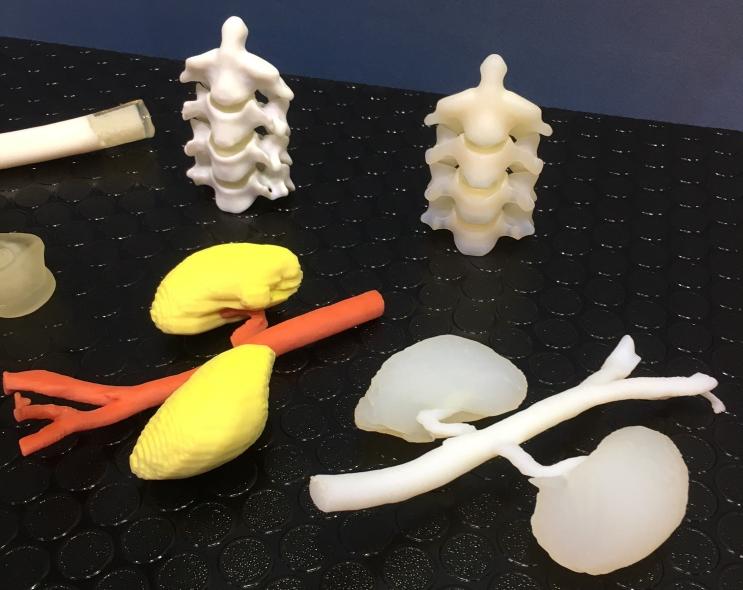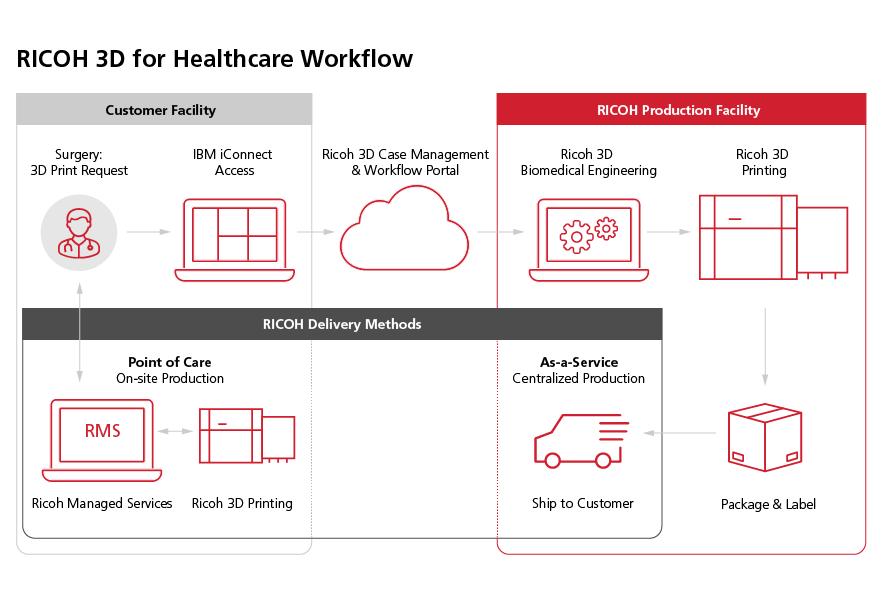
Robert Wesley, Biomedical Engineering Manager of Additive Manufacturing for Ricoh USA, will be participating in Additive Manufacturing Strategies 2022, Panel 2: 3D printing in surgical planning and modeling.
From creating customized wheelchairs for special needs dogs to critical parts in supersonic jets, there’s no denying that additive manufacturing – 3D printing – is changing lives.
This is especially true in healthcare. Each year there are exciting developments showcasing how 3D printing will transform the industry, a concept that traces back more than 40 years to 1981.
Back then, a craniofacial surgeon named Dr. Jeffrey Marsh and a radiologist named Dr. Michael Vannier – both working at the Washington University School of Medicine – teamed up with an engineer named James Warren to explore the concept of anatomic modeling.
Their first mission? Create a model of a young boy’s skull with a large nasal mass called frontonasal encephalocele. The team took digital files from the boy’s segmented CT scan and transferred them to a milling machine, which created a model using titanium plates the same thickness as the CT scan slices.
Unfortunately – due to a lack of funding – this important work ceased in 1982.
Fast forward 40 years to 2022. There have been some tremendous breakthroughs when it comes to 3D printing in medicine, from personalized prosthetics to customized orthodontic aligners. However, for the vast majority of clinicians, the technology is not within reach to help them in their day-to-day care of patients.
Image courtesy of Ricoh.
Considering it can cost upwards of a half a million dollars to install the technology and staff knowledgeable workers to run a 3D modeling solution onsite at a hospital, patient-specific 3D printed anatomic models are currently limited in availability. It’s highly unlikely your surgeon has the benefit of this technology locally.

It’s a problem we at Ricoh work every day to fix, and have identified a solution with the recent launch of RICOH 3D for Healthcare.
Our goal is simple, make 3D anatomic models accessible to the approximate 90% of surgeons, medical students and other providers working at healthcare facilities in the U.S. who don’t have access to patient-specific 3D printed models.
Image courtesy of Ricoh.
For the first time, RICOH 3D for Healthcare gives providers nationwide access to develop patient-specific representations of tissue and bone. The lifelike replicas serve as physical simulators to help clinicians see inside anatomy for greater visibility into patient needs. And, the solution is turnkey and cost-effective.
By making this a point-of-care manufacturing solution and handling the entire end-to-end workflow, Ricoh is helping to break down barriers and democratize this crucial technology. RICOH 3D for Healthcare is available to providers in two different ways. First, a point-of-care option, which includes having Stratasys 3D printers coupled with Ricoh’s Managed Services staff on-site to manage the entire process aligning with Ricoh’s Quality Management System and good manufacturing practices. Further, there is an on-demand option where providers can order and have anatomic models 3D printed and shipped directly to them.
Image courtesy of Stratasys.
One of the reasons RICOH 3D for Healthcare is so widely accessible, is the solution’s integration with IBM iConnect® Access from IBM Watson Health, an enterprise imaging solution many healthcare providers already use, making it easy for clinicians to incorporate into their existing workflow. Once a healthcare professional uses the interactive segmentation tool within IBM iConnect Access and submits a request for a 3D-printed anatomic model, Ricoh facilitates the entire development process on the centralized HIPAA-compliant platform to produce and deliver accurate 3D printed models. Care teams have direct line of sight to the development, design, and production of each model throughout the process via the Ricoh 3D Case Management and Workflow Portal.
Currently, the 3D printed replicas are for non-diagnostic / treatment use, but this critical accessibility step brings our long-term vision of using this technology more broadly one step closer.
Sometimes, the biggest breakthroughs come when life-changing innovations can be made more broadly available, and with this solution, we’re looking to bring the 40-year-old vision of Marsh, Vannier and Warren to life at a hospital near you.
Authors: Gary Turner, Managing Director, Additive Manufacturing, North America, Ricoh USA, Inc. and Robert Wesley, Manager, Biomedical Engineer, Additive Manufacturing, Ricoh USA, Inc.
Stay up-to-date on all the latest news from the 3D printing industry and recieve information and offers from thrid party vendors.
Tagged with: 3d printed medical models • IBM • medical 3d printing • ricoh • Ricoh 3D • ricoh usa • stratasysPlease enable JavaScript to view the comments powered by Disqus.